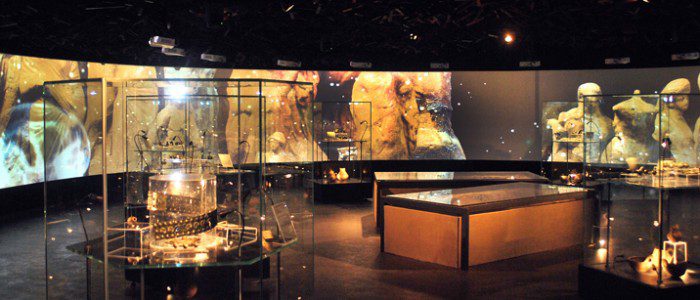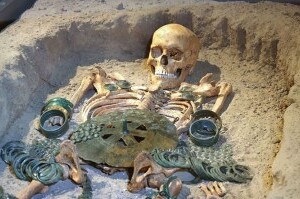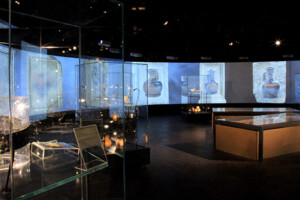
The archaeological collection, which represents the Iron Age, contains many items; it is the only representative cross-section of Iron Age material culture on the territory of Macedonia, from the XI to the end of the VI century BC. The artifacts were mainly obtained through archaeological excavations during the past sixty years, but some of them were gifts or were confiscated from illegal excavations.
The collection is extremely varied in the number of types and subtypes of artifacts, made according to specific functions of use, materials, and techniques of workmanship, as well as the method of decoration, which largely determine the regional and ethnic affiliations of material culture of the Central Balkans. It presents an integral unity, which gives us a complete picture of life in the Iron Age in Macedonia.
The Iron Age in its developing phase represents a period of stabilization and expansion in all social spheres of the community, resulting in the development of strong and distinctive local cultural values. Ceramic production is represented by two groups of pottery, handmade and made on a potter’s wheel. All the familiar Iron Age ceramic forms are represented (cups, plates, pitchers, vessels in the form of kantharoi and amphorae and skyphoi, jugs, pirahoi and pithoi). In this group of items, the local pottery decorated with red matt color with ribbon motifs, characteristic for the second half of the VII and VI century BC, especially stands out.
The appearance of standard weapons and tools made of iron, e.g., spears, arrows, swords and knives, is proof of all these manifestations characteristic of the Iron Age. The appearance of wealthy burials is proof of the existence of a privileged ruling class or, in other words, a tribal aristocracy, which is visible through the presence of iron spears in the male inhumations and of toilet paraphernalia.
In general, jewelry comes from female inhumations, and it is divided into several categories: decoration for the head: earrings, diadems, saltaleon; jewelry for neck and hands: necklaces, brooches, bracelets, rings; belt jewelry: buckles and buttons, which were made of bronze, bone, glass paste and amber, and rarely of silver or gold.
Of exceptional importance is the appearance of the items known as “Macedonian-Paionian Bronzes”, which without doubt indicate a special artistic expression of the unique religious beliefs of the communities on the broader territory of the current Republic of Macedonia. These artifacts represent original work of local workshops; they are made of hollow cast bronze and decorated with engraved geometric motifs. Their use in certain rituals gives them the characteristic of cult jewelry, which was worn by members of a certain rank of people in the society.
Chronologically, they are divided into two groups, and typologically into several groups: pendants in form of birds, poppy cups with round body, miniature jugs, horns of consecration, covers for bowls and parts of belt sets. The Paionians worshiped the sun in different ways and in various forms. The strongest expression were the birds, so that the sun as a hero most often was accompanied by birds. This cult was kept and maintained by a priesthood, who on their hands wore a composite set of pendants that ended in a poppy cup, in which the latex sap from poppies was kept to be used in rituals.
- Dr.Aleksandra Papazovska, archaeologist, custodian advisоr for Iron age (papazsan@hotmail.com)
- Strahil Temov, custodian advisоr for Iron age (temovstrahil@yahoo.com)
- M.A Aleksandra Cevreska, curator for Iron age (aleksandracevreska@gmail.com)








